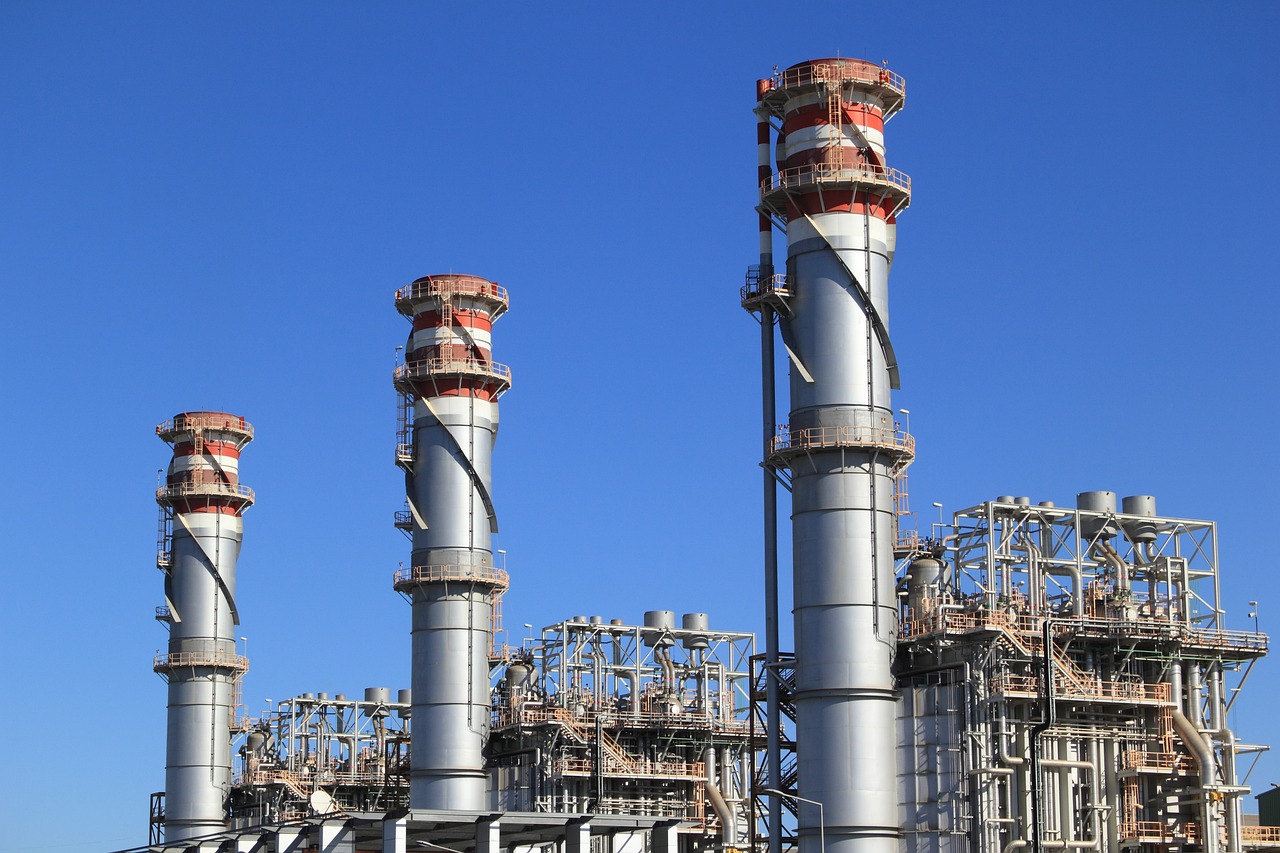As the world grapples with the challenges of climate change, dwindling fossil fuel reserves, and environmental degradation, the search for sustainable and renewable sources of energy has gained paramount importance. In this quest for cleaner and more environmentally friendly alternatives to traditional fuels, bioethanol has emerged as a promising solution. Bioethanol, often referred to as ethanol, is a type of alcohol produced through the fermentation of sugars and starches found in various plant materials. This versatile biofuel not only provides an eco-friendly alternative to gasoline but also offers a range of industrial and medical applications. In this comprehensive article, we delve into the world of bioethanol, exploring its production process, benefits, challenges, and the pivotal role it plays in our journey toward a more sustainable energy future.
The Production of Bioethanol
Bioethanol is produced through a series of well-defined steps, primarily involving the fermentation and distillation of plant-derived materials. The choice of feedstock, which includes various crops and organic sources, is a crucial decision that impacts the production process and sustainability. Here’s an overview of the bioethanol production process:
1. Feedstock Selection:
The first step in bioethanol production is selecting the appropriate feedstock. Various crops, plants, and organic materials can serve as sources of fermentable sugars and starches. Common feedstocks include:
Corn: In the United States, corn is a widely used feedstock for ethanol production. The kernels are processed to extract starch for fermentation.
Sugarcane: Brazil is a major producer of sugarcane-based ethanol. Sugarcane contains high levels of sucrose, which can be easily fermented to produce ethanol.
Wheat: In some regions, wheat is used as a feedstock. The wheat grains are processed to extract starch for fermentation.
Cellulosic Biomass: This category includes non-food crops and agricultural residues like switchgrass, corn stover, and wood chips. Cellulosic ethanol production focuses on breaking down cellulose and hemicellulose into fermentable sugars.
The choice of feedstock can vary by region, depending on local agriculture and sustainability considerations. In recent years, there has been a growing emphasis on non-food feedstocks and cellulosic biomass to reduce competition with food production.
2. Pretreatment:
The selected feedstock typically undergoes pretreatment to make the starches or sugars more accessible for fermentation. This step involves physical or chemical processes that break down the feedstock’s structure, enabling the release of fermentable sugars.
3. Fermentation:
Fermentation is a key process in bioethanol production. In this step, microorganisms, such as yeast, are introduced to the pretreated feedstock. These microorganisms consume the sugars and starches, converting them into ethanol and carbon dioxide through a metabolic process. The resulting liquid is known as “mash.”
4. Distillation:
The mash contains a mixture of ethanol, water, and other components. To obtain ethanol with a higher level of purity, the mash undergoes distillation. During distillation, the mash is heated, causing ethanol to vaporize and separate from the water and impurities. The ethanol vapor is then condensed into a liquid form.
5. Dehydration:
To further increase ethanol purity, dehydration is often employed. Dehydration involves removing any remaining water from the ethanol using techniques like molecular sieves or azeotropic distillation.
6. Denaturation (if necessary):
In some cases, ethanol intended for industrial or medical use may undergo denaturation. Denatured ethanol contains additives to render it undrinkable, making it suitable for applications like hand sanitizers and cosmetics.
The final product of the bioethanol production process is high-purity ethanol that can be used as a biofuel or in various industrial and medical applications.
The Environmental Benefits of Bioethanol
Bioethanol is often touted as a more sustainable and environmentally friendly alternative to traditional fossil fuels. Several key environmental benefits make it an attractive choice in the transition to cleaner energy sources:
1. Reduced Greenhouse Gas Emissions:
One of the most significant advantages of bioethanol is its potential to reduce greenhouse gas emissions. When bioethanol is used as a fuel, the carbon dioxide (CO2) emitted during combustion is roughly equivalent to the CO2 absorbed by the plants during their growth. This creates a closed carbon cycle, theoretically resulting in a net-zero increase in atmospheric CO2 levels. In contrast, burning fossil fuels releases carbon that has been sequestered underground for millions of years, contributing to increased CO2 levels and global warming.
2. Renewable Energy Source:
Bioethanol is considered a renewable energy source because it is derived from crops and organic materials that can be replanted and harvested on an ongoing basis. This stands in stark contrast to finite and non-renewable fossil fuels, which are being rapidly depleted.
3. Reduced Air Pollutants:
Compared to gasoline, bioethanol has the potential to reduce air pollutants, such as sulfur and particulate matter, when used as a fuel. This can lead to improvements in air quality and public health, especially in urban areas.
4. Emission Reductions in E85 Blends:
Ethanol’s ability to reduce greenhouse gas emissions becomes particularly pronounced in higher ethanol blends like E85 (85% ethanol and 15% gasoline). Flex-fuel vehicles capable of running on E85 experience a significant reduction in greenhouse gas emissions compared to traditional gasoline-powered vehicles.
5. Improved Energy Security:
Bioethanol production can enhance energy security by diversifying fuel sources and reducing reliance on oil imports. This contributes to more stable energy markets and reduces vulnerability to geopolitical and economic fluctuations in the oil sector.
Bioethanol in Different Applications
Beyond its use as a biofuel, bioethanol finds applications in a variety of industries. Its versatility and relatively low environmental impact make it an attractive choice for a wide range of uses:
1. Fuel and Transportation:
Fuel Blending: Ethanol is commonly blended with gasoline to create ethanol-gasoline blends such as E10 (10% ethanol and 90% gasoline). These blends are widely used in many countries and contribute to reducing the carbon footprint of gasoline.
E85 Fuel: E85 is a high-ethanol blend consisting of 85% ethanol and 15% gasoline. It is used as an alternative to traditional gasoline and is known for its high ethanol content. Flex-fuel vehicles are capable of running on E85, and it is a way to further reduce greenhouse gas emissions and reliance on fossil fuels.
2. Industrial and Medical Applications:
Solvent: Ethanol is used as a solvent in various industries, including pharmaceuticals, perfumes, and cosmetics. Its properties make it an ideal choice for dissolving and preserving various substances.
Hand Sanitizers and Disinfectants: Ethanol is a key ingredient in hand sanitizers and disinfectants, making it a critical component for public health, especially during health crises such as the COVID-19 pandemic.
3. Agriculture and Farming:
Seed Treatment: Ethanol-based seed treatments are used in agriculture to protect seeds from pathogens and improve germination rates.
Plant Extraction: Ethanol is used for plant extraction and botanical tinctures in the herbal and pharmaceutical industries.
4. Environmental Engineering:
- Sediment Analysis: Environmental engineers use ethanol for sediment analysis in bodies of water. It helps determine the size distribution of sediments, which is critical for assessing water quality and environmental impact.
5. Research and Development:
Material Characterization: In material science and research, ethanol is used to characterize the particle size distribution of raw materials and assess their suitability for various applications.
Chemical Reagent: Ethanol serves as a chemical reagent and a solvent in various laboratory and research applications.
6. Geology and Sedimentology:
- Sediment Analysis: Geologists use ethanol to study sedimentary rocks and their formation. It provides insights into the history and composition of rock layers.
7. Pharmaceuticals:
- Quality Control: The pharmaceutical industry relies on ethanol to ensure that pharmaceutical powders and excipients meet quality standards. Ethanol is used to assess particle size distribution, which is crucial for the effectiveness and safety of medications.
Challenges and Considerations
While bioethanol offers numerous benefits, it is not without its challenges and considerations:
1. Environmental and Social Impact:
Deforestation: In some regions, the cultivation of feedstocks for bioethanol production has led to deforestation, which has serious ecological consequences.
Competition with Food Crops: The use of food crops, such as corn and sugarcane, as feedstocks for bioethanol can raise concerns about competition with food production and potential food security issues.
Resource Intensity: Bioethanol production can be resource-intensive, requiring significant amounts of water and energy. Sustainable practices, efficient technologies, and the use of non-food feedstocks can mitigate these challenges.
2. Non-Spherical Particles:
- Sieve Analysis: In the context of particle size analysis, non-spherical particles can pose challenges as they may not efficiently pass through sieves. Alternative methods, like laser diffraction, may be more suitable for such particles.
3. Particle Shape and Size Analysis:
- Sieve Analysis: When assessing particle size, it’s essential to consider particle shape, as irregularly shaped or elongated particles may not accurately represent their actual size. Advanced techniques are often required for precise particle size and shape analysis.
4. Sample Size:
- Sieve Analysis: The reliability of sieve analysis results depends on the representativeness of the sample. A small or poorly collected sample may not provide accurate information about the entire material.
5. Operator Variability:
- Sieve Analysis: Manual sieving can introduce operator variability, affecting the consistency of results. Mechanical shakers are often preferred for their consistency.
6. Interpretation of Results:
- Sieve Analysis: Understanding and interpreting the results, especially in complex particle size distributions, can be challenging. Proper training and expertise are essential.
7. Special Sieves:
- Sieve Analysis: For very fine materials or those with specialized characteristics, special sieves may be required.
Conclusion
Bioethanol, or ethanol, has emerged as a renewable and sustainable source of energy and a promising alternative to traditional fossil fuels. Its production process, which involves the fermentation and distillation of sugars and starches from various plant materials, provides a versatile and eco-friendly biofuel. Beyond its role as a fuel, bioethanol finds applications in various industries, from pharmaceuticals and cosmetics to agriculture and environmental engineering. Its environmental benefits, such as reduced greenhouse gas emissions and improved air quality, contribute to a more sustainable energy future.
However, bioethanol production is not without challenges, including concerns about its environmental and social impact, the resource intensity of production, and the need for sustainable practices. Addressing these challenges is essential to maximize the benefits of this renewable energy source.
In a world where the transition to cleaner and more sustainable energy sources is imperative, bioethanol stands as a valuable player in the effort to reduce carbon emissions, increase energy security, and pave the way for a more sustainable future. As technology and sustainability practices continue to advance, the role of bioethanol in our global energy landscape is likely to become increasingly prominent.














